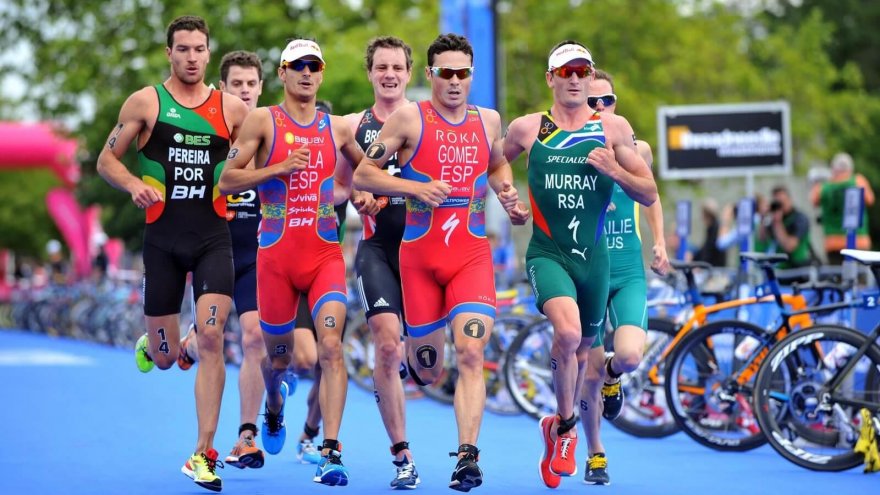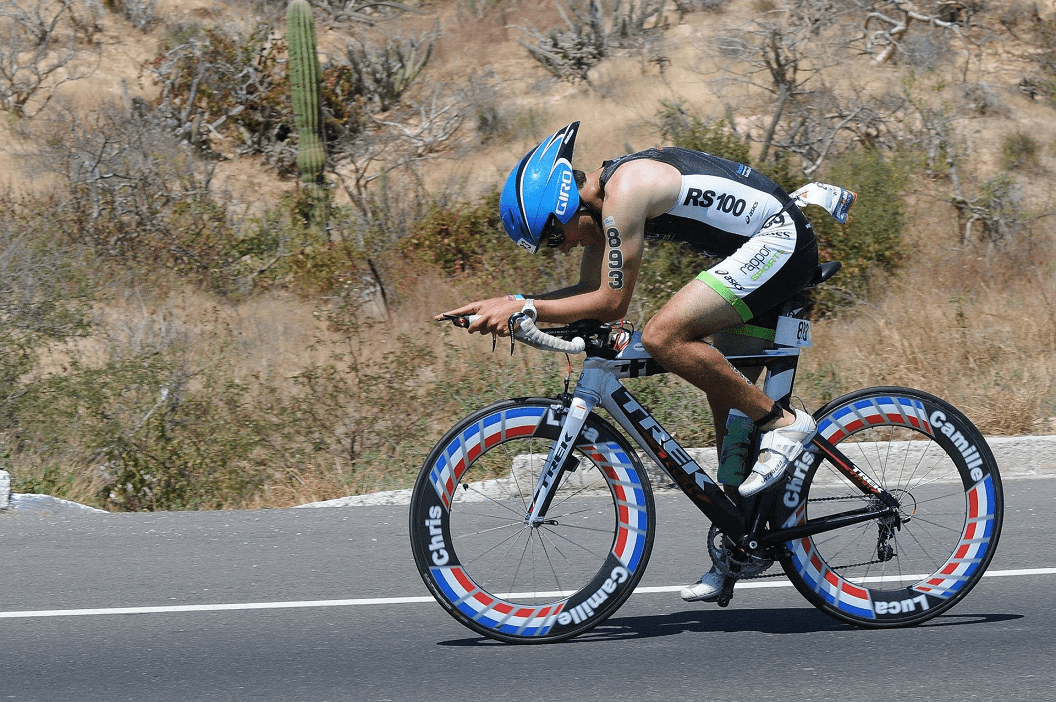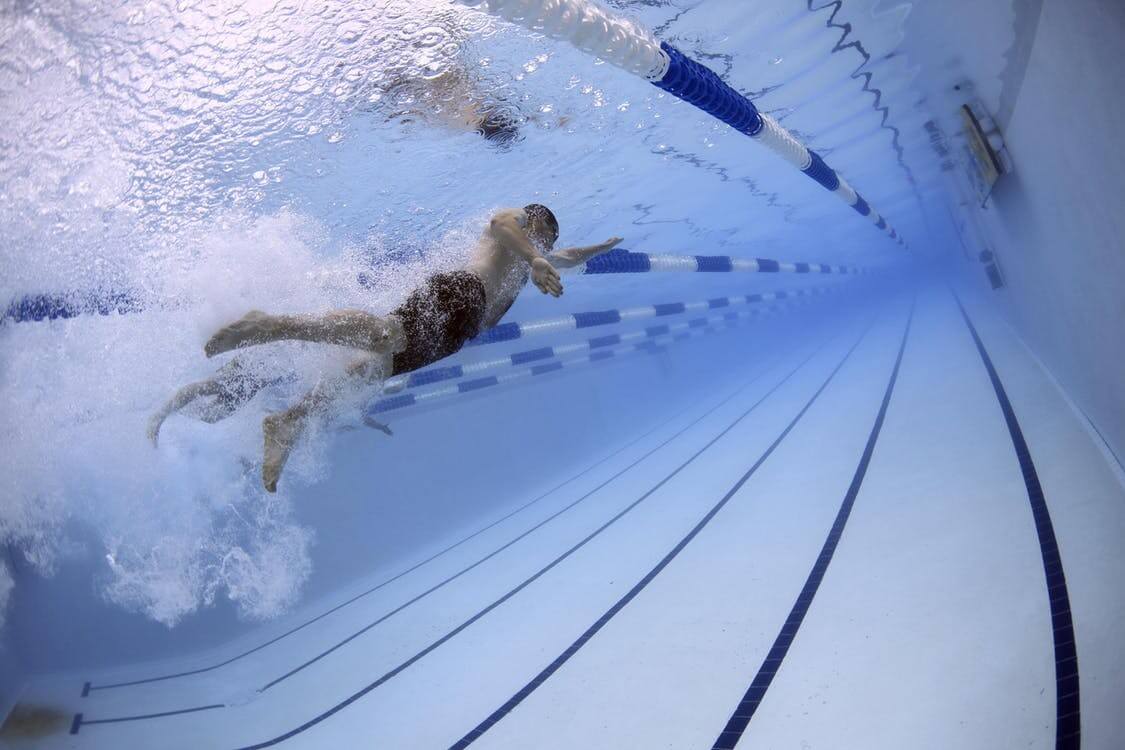What Does it Take to Train for an Ironman Triathlon?

2.4 mile swim. 112 mile bike ride. 26.2 mile run. 12 to 17 hours of constant exercise. This is the Ironman Triathlon, the toughest one-day endurance sport in the world. It takes more than just a body that can swim, bike, and run well. It takes hours of dedication and a level of sheer grit and determination that only a handful of people are willing to dig deep enough to find. It’s arguably more mentally exhausting than it is physically taxing. But just exactly what does it take to train for such an epic day of racing?
Getting Started
Most people start out by picking a race date months in advance— both to give themselves time to train and time to save! Registration for an Ironman Triathlon is definitely not cheap and will run you anywhere between $500 and $1000, but that doesn’t include the thousands of dollars you’ll spend on food and equipment.

They then find a training plan, most of which run between 12 and 18 weeks. But these plans expect that you’re already a vigorous endurance athlete, and that even if you haven’t completed an Ironman before, you’ve competed in other shorter endurance distance events, and that you’re regularly running, swimming, and biking. So if you are completely brand new to it all, start out smaller. Pick a smaller goal of a shorter running race, and throw in some cross-training days. Find a group of people who are interested in the sport of triathlon, too. After a while, if you find yourself decent at all three sports, then consider embarking on an Ironman Training plan.
The Training Plan
Like mentioned above, most plans are designed with the assumption that you’ve already built a base. And you need to be familiar with what it takes to train multiple times a day, 6 days a week. For people with crazy work, school, and life schedules, finding time to dedicate each day to training is just not possible. (Plan on 3 or 4 hours during the week and sometimes 5 to 6, or even more on the weekends.) In fact, maybe the hardest part of training for an Ironman is simply finding the time to do so and figuring out how to schedule everything accordingly.
You’ll need to plan like a champ. You’ll need to map out run and bike routes, prep meals and make sure you are getting in enough food and hydration. It would also benefit you to have access to indoor training equipment (i.e. a treadmill, a stationary bike, and definitely an indoor pool) and a track.

There will be days that you focus your entire training time (i.e. the morning or afternoon or evening) on one sport. For instance, you might spend your entire morning on a long hour and a half run, and then go for an hour swim in the evenings. But you’ll also become quite familiar with “block training” to simulate race day and helping you prepare for transitions. That could mean you swim for 45 minutes and then immediately follow that up with an hour on the bike in the morning, and then another 30 minute bike ride and 30 minute run in the evening.
Because schedules are generally more flexible on the weekends, Saturdays and Sundays are when you’ll really put in the miles. In fact, you’ll often be training on BOTH days… but you absolutely must follow this up with a complete rest day on Monday! Getting enough sleep can be hard sometimes when life gets insane, but sleep and adequate rest and recovery are an extremely critical component to your training, to avoiding injury, and giving you a much needed mental break.

A typical 13 week plan might look something like this: you would start out by running 1 hour and 30 minutes, swimming for an hour, and biking for an hour and 30 minutes. By your peak training week, which is about 2 weeks out from race day before you start to taper, you will have only increased your total swim time by 30 minutes, but your running has jumped up to 3 consecutive hours and you might be biking for 5 hours straight. Not only does the volume of your training increase over the thirteen week period, but the intensity will too. As your endurance improves, you’ll focus on running at a fast pace, swimming faster laps, and be cycling faster miles.
Fueling For the Ironman
If you expect to work out for over an hour, you will need to make sure you pack the proper fuel to take along. And always have plenty of water on hand – no matter how long you are training, or even if you are seated at your desk at work, you need to be drinking plenty of fluids. Aim to consume 150 to 250 calories per hour of work, and 12 ounces of water or a hydrating sports drink per hour of work. You’ll need to plan ahead and make sure you have foods and gels that are easy to run with, are quick sources of energy (carbs), and that you have some place to put them (i.e. a running band or fuel belt).

Then, outside your training plan, there are some “food rules” to keep in mind:
- Always eat breakfast. Sometimes, you might end up eating two breakfasts (one before your morning workout and one after). And at least one of these breakfasts need to be big and hearty, full of plenty of all three macro nutrients.
- Make sure you’re fueling each workout substantially too. Focus on a 3:1 ratio of carbs to protein to help your muscles efficiently recover between workouts.
- Carry healthy but satisfying snacks at all times. Seriously, Ironman hunger can be EXTREME, and can strike at any time.
- Because you’ll need so many calories, you’ll need to focus on more calorie-dense snacks and meals. Full fat dairy products, nuts and nut butters, and lots of meat and animal products are great ways to increase calories without increasing volume.
- Stay hydrated. Depending on where you are at in your training cycle, you need to be drinking anywhere from 64 ounces to 150 ounces of water or sports drink a day!
Sources
- , How to Train for Your First IRONMAN, Active Blog Post
Latest Articles
 Is Running on a Treadmill Easier Than Running Outside?Runners have their own preferences, whether it is treadmill running, running outside on the road, or exploring trails. So...
Is Running on a Treadmill Easier Than Running Outside?Runners have their own preferences, whether it is treadmill running, running outside on the road, or exploring trails. So... Is It OK to Use Trail Running Shoes on the Road?While trail running shoes can be used on roads, especially in situations where a runner encounters mixed terrains or pref...
Is It OK to Use Trail Running Shoes on the Road?While trail running shoes can be used on roads, especially in situations where a runner encounters mixed terrains or pref... How to Fix Sore Quads After Running?Rest, ice, gentle stretching, and over-the-counter pain relievers can help soothe sore quads after running. Also, ensure ...
How to Fix Sore Quads After Running?Rest, ice, gentle stretching, and over-the-counter pain relievers can help soothe sore quads after running. Also, ensure ... 10 Fruits With The Most Electrolytes to Replace Sports DrinksThese fruits are high in electrolytes such as potassium, magnesium, and calcium, essential for hydration, muscle function...
10 Fruits With The Most Electrolytes to Replace Sports DrinksThese fruits are high in electrolytes such as potassium, magnesium, and calcium, essential for hydration, muscle function...

